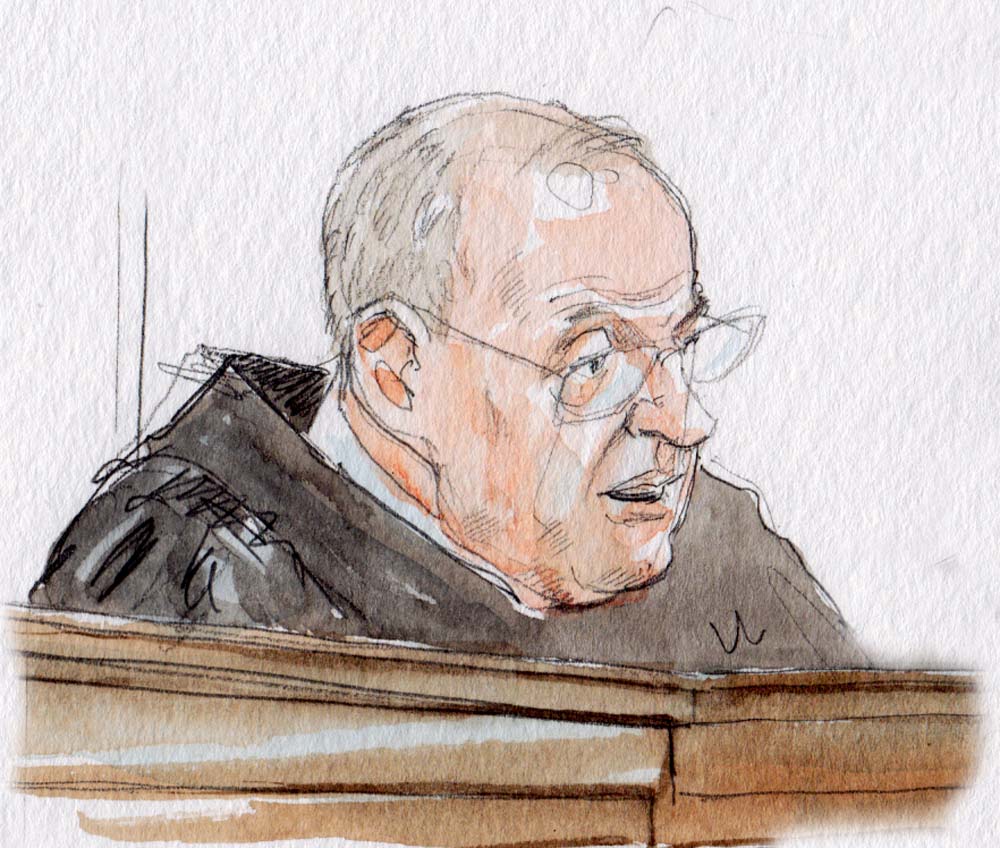Thursday round-up

on Jun 28, 2018 at 7:11 am

Yesterday the court issued its two remaining decisions of the term, and Justice Anthony Kennedy, long viewed as a “swing” justice, announced that he will retire as of July 31. An early round-up of coverage of and commentary on the Kennedy retirement came from Jon Levitan for this blog. For the Los Angeles Times, David Savage reports that “Kennedy’s decision to step down offers conservatives the opportunity they have long sought to lock in a reliable five-member majority on the high court” and “caps what was already one of the most difficult terms for liberals in recent memory, including defeats on issues such as public-sector unions, Trump’s travel ban and voting rights.” Additional coverage comes from Brent Kendall and Jess Bravin for The Wall Street Journal, Adam Liptak for The New York Times, Marcia Coyle and Tony Mauro at The National Law Journal (subscription or registration required), Kevin Daley at The Daily Caller, and Mark Walsh at Education Week. Coverage of Kennedy’s most significant opinions comes from Emily Cochrane for The New York Times, Jessica Contrera for The Washington Post, and Tony Mauro at The National Law Journal (subscription or registration required). At Bloomberg, Greg Stohr reports that the retirement “puts conservatives in striking distance of one of their most cherished goals: overturning the landmark Roe v. Wade abortion-rights ruling.” At The National Law Journal (subscription or registration required), Tony Mauro reports that “[i]t did not take long for the Washington nomination machine to kick into gear” after the announcement. The New York Times lists the front-runners to be Kennedy’s replacement, as do Felicia Sonmez and others for The Washington Post.
At Jost on Justice, Kenneth Jost remarks that “Kennedy gave liberal advocates and interest group little reason to cheer in his final term with his opinions and votes and no special reason apart from his previous record to mourn his decision to retire after 30 years on the Supreme Court.” Additional commentary on and analysis of the retirement comes from Emily Bazelon for The New York Times, Ian Millhiser at ThinkProgress, James Burling at the Pacific Legal Foundation, Howard Wasserman at PrawfsBlawg, Sean Smith at Ikuta Matata, Charlie Savage for The New York Times, the editorial board of The Washington Post, and the editorial board of The Wall Street Journal. At Modern Democracy, Michael Parsons looks down the road to the next retirement, possibly of Justice Clarence Thomas.
In Janus v. American Federation of State, County, and Municipal Employees, Council 31, the court, overruling longstanding precedent, held 5-4 that an Illinois law allowing public-sector unions to charge nonmembers for collective-bargaining activities violates the First Amendment. Jon Levitan rounded up early coverage and commentary for this blog. Mark Walsh has a “view” for this blog of the opinion announcement from the courtroom. At The National Law Journal (subscription or registration required), Tony Mauro also reports on the scene in the courtroom. At Good Judgment, Ryan Adler notes that the forecasting crowd “went out with its own bang at 85%.” Additional coverage comes from David Savage for The Los Angeles Times, Kevin Daley at The Daily Caller, Commentary comes from William Gould at Stanford Law School’s Legal Aggregate blog, the editorial board of The New York Times, and Howard Wasserman at PrawfsBlawg, who observes that “the opinion demonstrates why asking SCOTUS nominees about stare decisis is pointless.” [Disclosure: Goldstein & Russell, P.C., whose attorneys contribute to this blog in various capacities, is among the counsel on an amicus brief in support of the respondents in this case.]
The last decision of the day, and the term, also 5-4, was in Florida v. Georgia, in which the court held that the special master had applied too high a standard of proof against Florida in its claim of injury from Georgia’s use of the water in the Apalachicola-Chattahoochee-Flint River system. Lara Fowler analyzes the opinion for this blog. At E&E News, Amanda Reilly reports that although the court “handed Florida a partial win in the long-running Southeast water wars, reviving the state’s case against Georgia over water use in the Apalachicola-Chattahoochee-Flint River Basin,” “[t]he case … is far from over.” Counting to 5 (podcast) discusses today’s opinions.
At The Hill, Lydia Wheeler reports that in Trump v. Hawaii, “Justice Anthony Kennedy, possibly the swing vote in Tuesday’s 5-4 decision upholding President Trump’s travel ban, issued a concurring opinion that appeared to warn the president against making statements that disfavor any one religion.” Coverage of the effects of the ruling comes from Abigail Hauslohner for The Washington Post and David Nakamura, also for The Washington Post. Commentary comes from the editorial board of The New York Times, Ruth Marcus at The Washington Post, and Curt Levey in an op-ed for Fox News,
At The Federalist, Margot Cleveland weighs in on National Institute of Family and Life Advocates v. Becerra, in which the court held on Tuesday that California’s Reproductive FACT Act, which crisis pregnancy centers to make disclosures, including about the availability abortions, likely violates the First Amendment, writing that “[b]y ignoring the question of viewpoint discrimination and instead analyzing the FACT Act on its face—and holding that the law cannot withstand even mid-level scrutiny—the majority opinion provides crisis pregnancy centers a nearly impenetrable protection from government interference with their pro-life message.” For The New York Times, Elizabeth Dias and Sydney Ember report that “[w]hat many partisans on both sides agreed on … was that Justice Gorsuch — who voted with the 5-to-4 majorities in both [Trump v. Hawaii and NIFLA] — was an especially key figure in Tuesday’s decisions, because he wouldn’t have been on the court if Mr. Obama had been successful with the original nomination of Judge Garland.”
Briefly:
- At Rewire.News, Elizabeth Reiner Platt maintains that “[i]n four decisions issued near the end of the U.S. Supreme Court’s 2018 term, the Court offered wildly different accounts of the significance of, and its duty to redress, ‘discrimination’ in U.S. law.”
- At The George Washington Law Review’s On the Docket blog, David Brunori looks at South Dakota v. Wayfair, in which the justices ruled that states can require out-of-state retailers who don’t have a store or warehouse in the state to collect tax on sales to state residents, suggesting that “[e]nding the physical presence test will not end the debate or discussion.” [Disclosure: Goldstein & Russell, P.C., whose attorneys contribute to this blog in various capacities, is among the counsel to the petitioner in this case.]
We rely on our readers to send us links for our round-up. If you have or know of a recent (published in the last two or three days) article, post, podcast, or op-ed relating to the Supreme Court that you’d like us to consider for inclusion in the round-up, please send it to roundup [at] scotusblog.com. Thank you!


